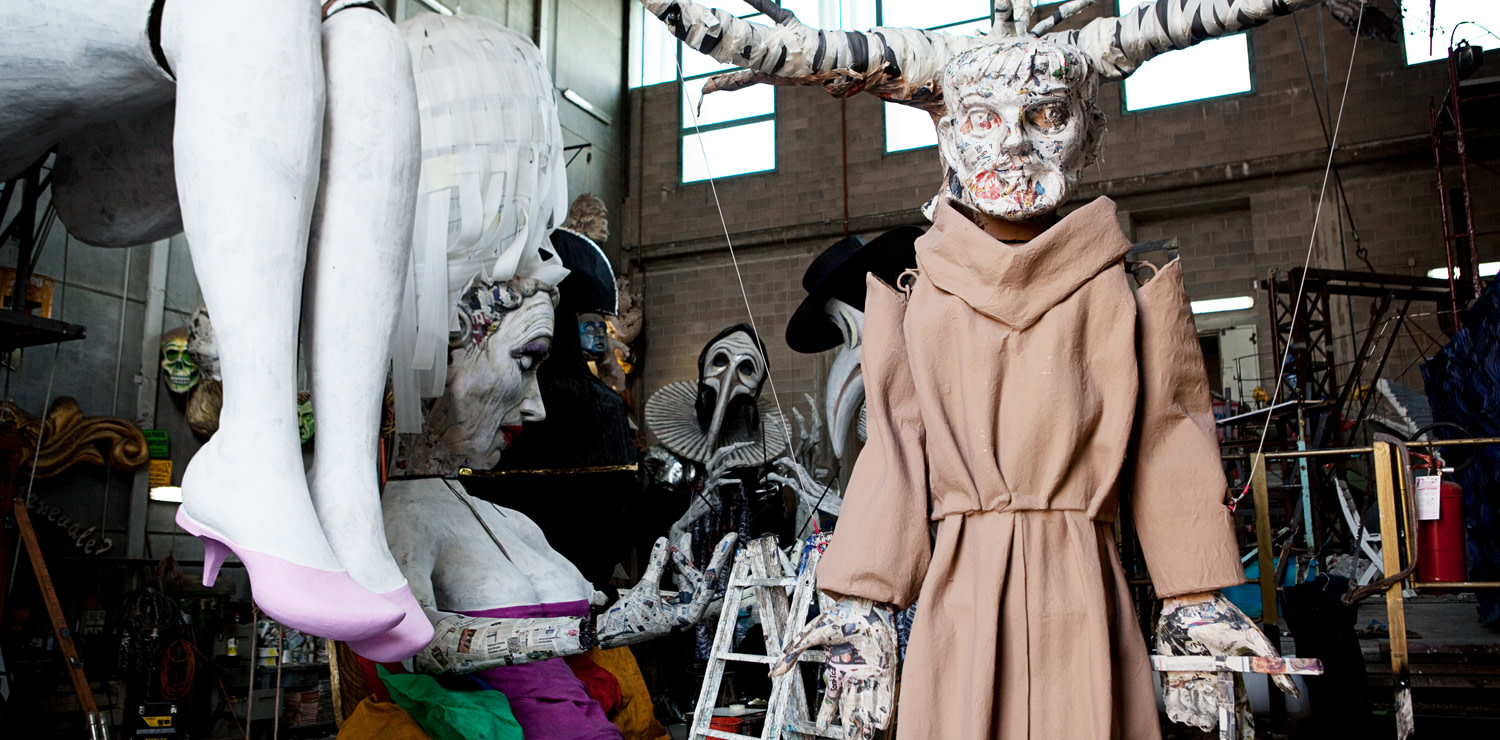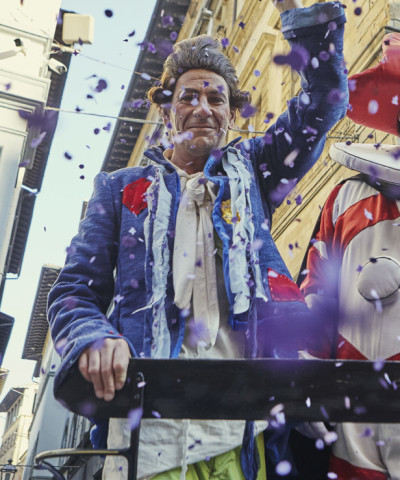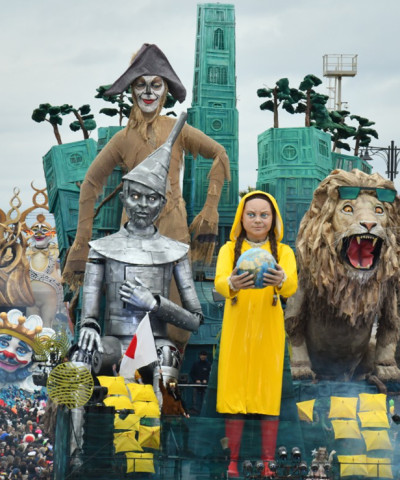The great show of Carnival of Viareggio
The exciting behind-the-scenes of the Cittadella
A parade of farm wagons and carriages along the Via Regia (from which the name Viareggio comes) to celebrate Carnival in the streets among people: this is the idea that came to a group of wealthy locals on Mardi Gras of the year 1873 and would develop into the famous Carnival of Viareggio: one of the world’s most beautiful and spectacular shows, established nearly at the same time as Nice’s Carnival parade.
The elements crucial to the Carnival’s immediate success were: the location, which has been the town’s sea front since 1905; the artists and artisans who worked along the Versilian coast, in particular, the shipwrights from the nearby ship-building yards at the Darsena (who were available in wintertime); and the invention of papier-mâché in 1925 by Antonio D’Arliano, a material much lighter than plaster which allowed to build larger and self-propelled floats.
In 1930, futurist painter Uberto Bonetti designed Burlamacco, inspired by one of the masks of the Commedia dell’Arte. He appeared in the company of Ondina on the first promotional poster in 1931. Since then, that clownish figure dressed in red and white, with a black cloak, a big hat and a button nose has been the symbol of the Carnival of Viareggio. Its other distinguishing feature is political satire, which is constantly fueled by Tuscans’ irreverent nature.
In Viareggio, the Carnival Parade is taken very seriously. There is a Foundation that nourishes, promotes, supervises and protects it, like a sort of Great Mother. The Carnival is a full time production with a staff that plans for it all year round. In the months between the end of Carnival celebrations and April, sketches for the next year are handed in. Then the design and construction of the new floats begins. Around November-December, the floats start to take shape. At Christmas time, the work on the floats proceeds at a frenzied pace, night and day, and every day is Monday.
Once, the floats were built in the streets, in the widenings between the houses, in the open market gallery or inside the theatre. Today, these papier-mâché giants are created in the huge hangars of the elliptical-shaped complex called Cittadella del Carnevale, located not far from downtown Viareggio.
Tradition has it that every week, from September through December, the locals “pop in” to check the progress of works on the floats: Carnival fans, friends of the float-builders, but also grandparents with children. The Cittadella’s main square is filled with people who come and go and, unlike what one would expect, nobody complains. On the contrary, float-builders appreciate people visiting them, as long as visitors are unobtrusive, because it makes them feel supported.
From Epiphany on, the Cittadella’s elliptical square becomes a huge stage where rehearsals carry on in full swing: dressed-up dancers rehearsing the choreography over and over with music at full blast, floats coming out of the hangars to see what impression they make, a chaotic and cheerful, old-style Cinecittà atmosphere. The floats that every year compete for the podium are divided into four categories: ten in the first category, four in the second, nine group floats and sixteen individual floats.
“It takes six months from the moment the pencil hits the page to the time a float is complete- says Michele, the son of Umberto Cinquini, who is known for his innovative projects, designed with the help of his brother Stefano –building a float is a work of carpentry, painting, sculpture and welding at the same time, and we are able to do it all here. It’s a team effort, hard and dangerous at times, you have to keep an eye on everything but, after all, it’s like living all year long in a time machine that takes you back to old artisan workshops”.
Fabrizio Galli, another float-builder, tell us how complex each float’s mechanism is: “A parading float has at least fifteen people inside, invisible from the outside, who keep the float moving”. He adds that “in the past few years, we’ve gone back to the traditional movement controlled by hand, with mechanical devices ( in the warehouse they look much like those designed by Leonardo da Vinci, editor’s note), because the float has to be alive. Every movement, even the blinking of an eye, is studied down to the minutest detail to make it appear as natural as possible, and in Viareggio we are the best at this”. Furthermore, every float has about 200 participants wearing costumes, nearly seventy of them dancing and singing to a choreography around it and the rest riding on the float.
While we walk inside the hangar of Alessandro Avanzini, the son of Silvano Avanzini who back in the sixties inaugurated the most biting political satire season in the history of the Carnival, we notice an “outsider” among the paper sculptures under construction. The “foreign body” is a giant Proust, the famous armchair designed by Alessandro Mendini. It is at least three meters high. “What is this doing here?”, we ask. Our host answers, with a seraphic expression on his face: “Most of us here are master artisans who, besides working full-time for Viareggio’s Carnival parade, work on other projects as well: theatre productions, other Carnival parades across Italy, settings for trade shows and boutiques or, in my case, with designers. The Foundation- goes on Avanzini- grants us a great form of freedom: our mission is to please the Carnival’s audience, without having the need to sell what we do”. Once again, even in the 21stcentury, Tuscany docet….











